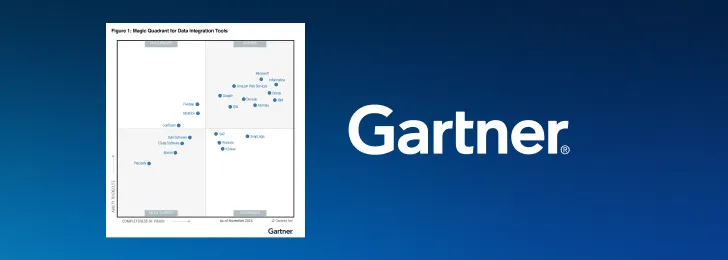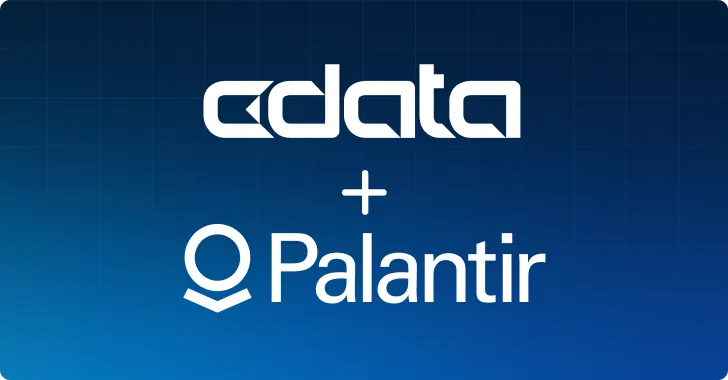
From customer interactions and transaction records to social media engagement and IoT device streams, modern organizations need to keep up with managing their expanding data. Maximizing the value of the data they collect is a pressing issue for businesses aiming to maintain a competitive edge.
As the variety of data increases, so do the ways to store and manage it. There are myriad ways to store data—and a lot of research should go into choosing the most appropriate one takes a lot of research and planning. Two such approaches—the data lake and the data warehouse—provide solutions to address the challenges of big data management in different ways.
This article will explain the details of each solution, define its benefits and distinct differences, and provide some information on how to choose the one that best suits your data management needs.
What is a data lake vs. a data warehouse?
If you’re new to data management (and even if you’re not), it can be difficult to wrap your head around all these data terms these days. It helps to know that the terms aren’t random—each name more or less describes the purpose. The main features of the ones we’re talking about today should give you a hint: Organized (data warehouse) and not organized (data lake). Here is a breakdown:
What is a data lake?
A data lake is an architecture designed to store massive amounts of unprocessed, raw data in its native format. The name describes its purpose very well: It’s a kind of pool filled with all types of data in one place, whether structured, unstructured, semi-structured. This apparent lack of order is invaluable to organizations that need to work with big data. A few benefits:
- Flexibility: Data lakes’ ability to store any type of data format allows developers and data scientists to build different data models or applications for experimentation, research, and artificial intelligence and machine learning (AI/ML).
- Scalability: Data lakes can accommodate the exponential growth of data without being processed. This is important in big data analysis, where new data is captured continuously.
- Cost-effectiveness: Most data lakes are hosted on cloud-based servers, making them more economical for storing large amounts of unstructured data. There’s no need to pre-process the data before storing it, which means you save money and server space. They can also be used as a temporary store until a specific type of data is needed. Then, it can be queried, processed, and analyzed for any purpose.
What is a data warehouse?
A data warehouse is a centralized repository for processed data that is ready for use. You can think of a data warehouse like a physical warehouse or even your local home improvement center. It stores data in a structured and organized way. This organized format allows for fast querying and analysis. Additional advantages include:
- Data quality: Data warehouses store data that’s already processed, which sets the stage for fast access. Data is high-quality and consistent, important for critical analyses, like financial reporting.
- Historical data analysis: A well-structured data warehouse can facilitate extensive historical intelligence, allowing organizations to analyze patterns and trends over time.
- Complex querying: Organizations with data warehouses can make complex queries and reports, providing quick access to insights.
What are the differences between a data lake and a data warehouse?
Understanding the functional differences between data lakes and data warehouses is crucial for organizations weighing their options. Depending on specific needs and data strategies, some may opt for one over the other or even employ both to serve distinct purposes. Here are five of the major differences between them:
Data sources
Data lakes ingest data from a multitude of disparate sources, including structured data from relational databases, semi-structured data like JSON and XML files, and unstructured data such as emails, documents, and multimedia. This inclusivity enables organizations to capture a wide view of their operational ecosystem.
Conversely, data warehouses are structured to house data that originates from transactional systems, operational databases, and line of business applications in a highly structured format. The curated nature of data warehouses means they are less versatile in the range of data types they house, but the data is available for immediate analysis and reporting.
Processing capabilities
Data lakes, with their expansive raw storage approach, are built to handle massive volumes of diverse data types. They are primed for big data processing, analytics, and machine learning. This enables analysis and computation directly on the stored data, regardless of the format or structure.
Data warehouses rely on traditional ETL (extract, transform, load) processes to structure and refine data before it's stored. For this reason, data warehouses are optimized for speed and efficiency in data retrieval and analysis. This makes them ideal for routine business intelligence (BI) and reporting tasks where quick access to processed data is necessary.
Performance
Performance can vary widely among any type of data architecture based on the type of data queried and the complexity of the operations. Because data lakes need to search through vast amounts of raw data, they can sometimes lag in performance when dealing with large-scale analytics or complex queries.
In contrast, data warehouses are built specifically for high-speed data retrieval and analysis. The pre-processed and structured data within the warehouses permits fast querying, making them highly efficient for specific analytical needs.
Schema
Data lakes operate on a schema-on-read basis, which means the data's schema is defined after the data is stored. This makes the process of gathering the data faster and provides flexibility in how data is stored and later accessed. This approach is well-suited in cases where the data's future use is not entirely known at the time of storage.
Data warehouses use a schema-on-write approach, where a predefined schema is defined before the data is stored. This ensures that all data within the warehouse is immediately structured, processed, and ready for analysis. This makes analysis fast, but this schema requires more upfront work to define how data is organized.
Data quality
In a data lake, the data is stored in its raw state, so there's a broad spectrum of data quality, from high-quality, structured data to less refined, unstructured data. This variability of data requires additional processing and validation steps to ensure it is accurate and ready for analysis.
By their very design, data warehouses store data that has already been cleaned, transformed, and validated, ensuring a high level of data quality and consistency that's immediately ready for BI applications.
Data warehouse vs. data lake: How to choose the right option
The choice between a data warehouse and a data lake (or a combination) is not just technological; it’s strategic. Each solution serves distinct purposes and offers different benefits. Understanding their use cases is central to determining which solution—or blend of solutions—best aligns with your business needs.
Data lake use cases
- IoT data storage and analysis: Data lakes can handle immense volumes of data generated by IoT devices, enabling real-time data stream capture. Organizations can capture live data streams, offering insights into operational efficiency, customer behavior, and product performance, among others.
- Centralized data storage: A data lake’s ability to store raw, unprocessed data from various sources provides a unified data access point for deep analytics and reporting, supporting a data-driven decision-making process.
- Exploratory data analysis and research: Data lakes give data scientists and analysts access to raw data, enabling exploratory data analysis. This flexibility allows for the discovery of new insights, trends, and patterns, paving the way for innovative solutions and strategies.
Data warehouse use cases
- Market basket behavior analysis: Data warehouses are designed for querying structured data, making them well-suited for market basket analysis. Retailers depend on this function to understand purchase patterns, optimize product placement, and enhance cross-selling strategies.
- Customer segmentation: With structured data readily available, data warehouses enable businesses to divide customer data by segments. This analysis helps to tailor marketing efforts, personalize customer experiences, and improve service offerings.
- Supply chain efficiency: Businesses in the supply chain industry rely on data warehouses to improve overall efficiency, from parts availability to transport schedules. Quick access to structured data helps streamline processes, reduce costs, and improve delivery times.
What is a data lakehouse?
For many organizations, one solution won’t solve all their data management challenges. The issue isn’t choosing between one or the other; it’s figuring out how to make both architectures work for them. There is a solution that combines the best of both worlds: the data lakehouse.
Each organization's data management needs are unique. A data lakehouse offers a new approach to managing data the way an organization needs to manage it. It blends the vast storage capacity and flexibility of the data lake with the structured organization and analytics-ready nature of the data warehouse. The novel architecture of the data lakehouse allows organizations to store all their data in a single, unified data lake-style platform while still getting the performance and governance features of traditional data warehouses.
Data lakehouses are cost-efficient, scalable, and can handle all kinds of data types and formats. They can also perform high-speed analytics and machine learning on structured data. Lastly, the lakehouse architecture also addresses some of the data quality and consistency challenges of data lakes with mechanisms to apply data governance and transactional consistency.
This hybrid model was developed to answer the need for both the deep analytics capabilities of a data warehouse and the flexibility to explore raw, unstructured data. Data lakehouses offer organizations a way to accelerate their data-driven decision-making processes, improve accessibility for all users, and streamline their data infrastructure.
The CData difference
Modern data-driven organizations need a multi-pronged approach to handle their data. CData Sync provides smooth, comprehensive data integration and replication for on-premises or cloud-based data into your architecture, whether it’s in a lake, a warehouse, or a lakehouse.
Explore CData Sync
Get a free product tour and start a free 30-day trial to get your big data integration pipelines built in just minutes.





